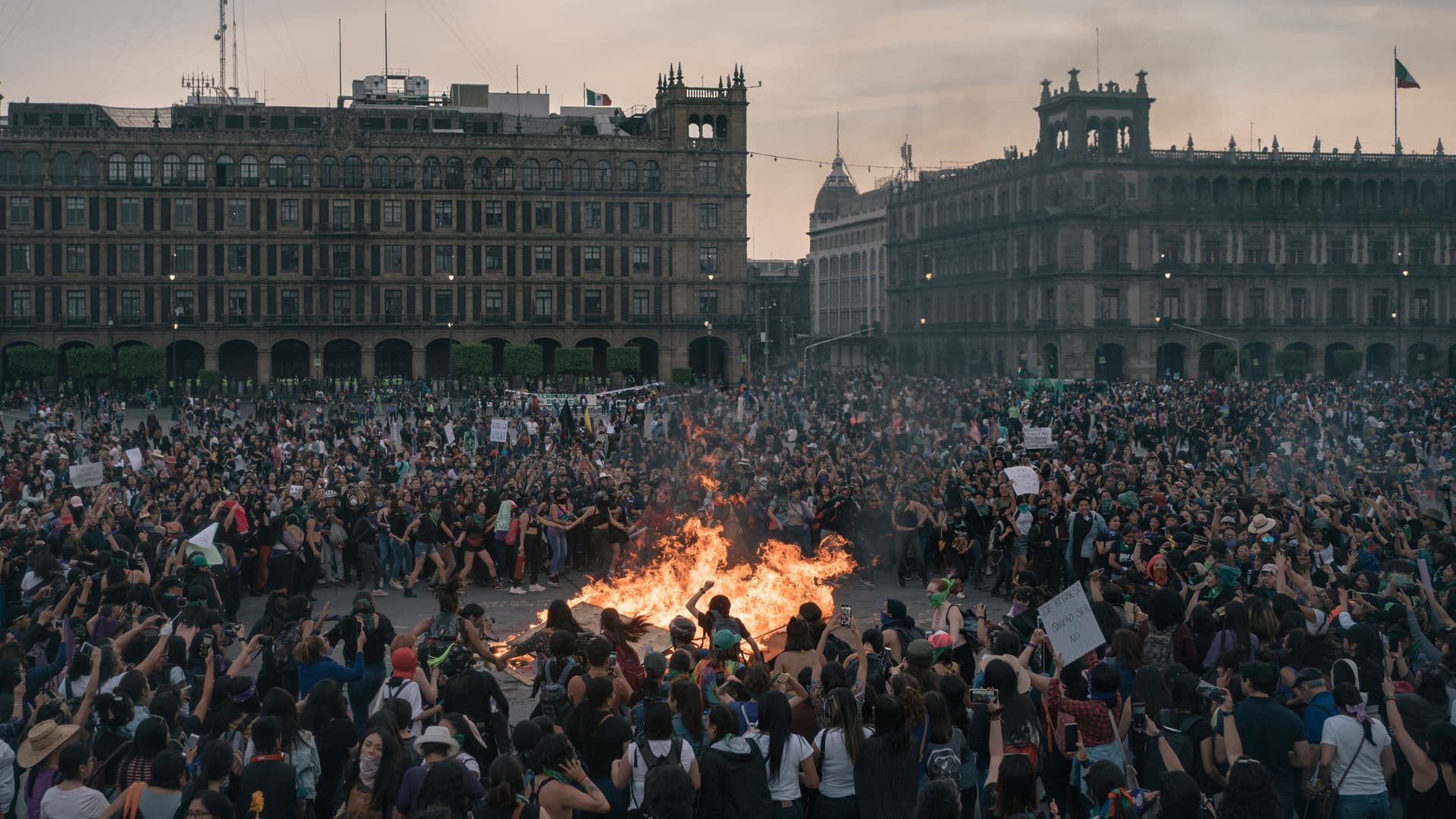Protesters Flood Belém Streets, Pressure UN Climate Talks Midway
Demonstrators converged in downtown Belém as negotiators reached the midpoint of UN climate talks, increasing pressure for stronger emissions cuts, greater climate finance, and protections for Indigenous territories. The protests underscore the political and economic stakes of the negotiations, because policy signals emerging here will affect investment decisions, commodity markets, and the costs of climate risks worldwide.
Listen to Article
Click play to generate audio

Demonstrators filled avenues and plazas in Belém on the halfway point of the United Nations climate talks, amplifying demands for more ambitious emissions reductions, binding climate finance commitments, and legal protections for Indigenous communities in the Amazon region. The protests arrived at a tense juncture for negotiators who face not only technical questions about targets and transparency, but also deep political divisions over responsibility, finance, and development pathways.
Activists and community leaders used the visibility of the summit to press negotiators to align outcomes with scientific benchmarks. The Intergovernmental Panel on Climate Change has emphasized that global greenhouse gas emissions must fall sharply this decade, with estimates pointing to roughly a 43 percent reduction in carbon dioxide and other greenhouse gases by 2030 compared with 2019 levels to keep 1.5 degrees Celsius within reach. Demonstrators framed the talks as a test of whether governments will translate those targets into binding obligations and finance for vulnerable countries.
Economic implications are immediate and practical. Investors and corporate planners watch diplomatic language for policy clarity that affects valuations across energy, agricultural commodities, insurance, and infrastructure. Stronger commitments on fossil fuel phaseouts and accelerated renewables deployment would likely increase capital flows into clean energy projects, while tighter rules around land use and deforestation could alter the cost structures of soybean, beef, and timber supply chains tied to the Amazon basin. Conversely, weak or ambiguous outcomes would sustain policy risk and could push up climate related insurance costs and financial sector provisioning for transition liabilities.
Finance emerged as a central flashpoint. Wealthy nations originally pledged a goal of mobilizing $100 billion per year for developing countries by 2020, a milestone that has been missed and remains a point of contention. Climate adaptation and loss and damage needs in vulnerable economies are far larger, with estimates by multilateral institutions and analysts suggesting annual investment requirements in emerging markets run into the trillions of dollars if warming is to be kept within ambitious limits and resilience built. Negotiators in Belém face pressure to produce not only targets but also credible, measurable finance mechanisms.
The location of the talks injects additional political sensitivity. Brazil’s Amazon region is both a global carbon sink and the economic heartland for extractive and agricultural interests. Indigenous groups and local communities argue that protecting forests is inseparable from climate policy and economic development. Their presence on the streets signals that any agreement perceived as sidelining rights or local livelihoods will face sustained domestic opposition, complicating ratification and implementation.
As the conference moves into its second half, market participants will be parsing draft texts for enforceable commitments, timelines, and funding pledges. Those signals matter for long term capital allocation, because clearer policy reduces uncertainty and accelerates shifts already visible in global investment toward low carbon technologies. In the absence of stronger action aligned with scientific guidance, the economic costs of extreme weather, supply chain disruptions, and stranded assets will continue climbing, reinforcing the message from the streets that this negotiation has real world consequences beyond diplomatic rooms.


